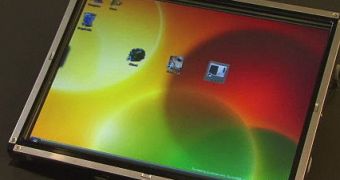At the start of this week, Microsoft opened up a tad on Windows 7, without actually saying all that much. Julie Larson-Green, Corporate Vice President, Windows Experience Program Management, demonstrated the multi-touch features of the next iteration of the Windows client. Chief Executive Officer Steve Ballmer confirmed late 2009 as the availability date for Windows 7, a deadline also announced by Chairman Bill Gates. But beyond that, Steven Sinofsky, Senior Vice President, Windows and Windows Live Engineering Group said that the company is not ready to share any additional details. However, Microsoft will be ready to deliver an insight into Windows 7 features including the next generation DirectX and the Graphics Advances of the operating system.
"Windows 7 enables you to advance the graphics capabilities of your applications while carrying forward existing investments in your Win32 codebase, including GDI and GDI+. New enhancements to DirectX let Win32 applications harness the latest innovations in GPUs and LCD displays, including support for scalable, high-performance, 2D and 3D graphics, text, and images. Also learn how to leverage the GPU's parallelism for general-purpose computation such as image processing," reads the excerpt from a 2008 Professional Developers Conference session.
Microsoft's PDC2008 will take place in Los Angeles between October 27 and October 30, 2008. The conference will feature in excess of 160 sessions focused on a range of topics including Windows 7, Windows Mobile, Silverlight, Live Mesh, etc. As of May 28, registrations for PDC2008 are live, and come with the opportunity to benefit from a $200 reduction. Along with the graphics advances in Windows 7, Microsoft is also preparing to provide a deeper insight into touch computing. The Windows 7 touch computing session will not only demonstrate the operating system's support for touch and gestures through its natural input model, but will also showcase the application programing interface behind the new multi-touch gesture capabilities, and reveal how developers will be able to leverage the API in their applications.
Additionally, Windows 7 will deliver web services in native code. "Windows 7 introduces a new networking API with support for building SOAP based web services in native code. This session will discuss the programming model, interoperability aspects with other implementations of WS-* protocols and demonstrate various services and applications built using this API," Microsoft informed.
And on top of it all, Windows 7 will be optimized to run on mobile computers. In this context, the Redmond company has tweaked the client in order to make it as energy efficient as possible, aiming to extend battery life beyond what is available today. "A single application can reduce mobile battery life by up to 30%. Windows 7 provides advances for building energy-efficient applications. In this session we will discuss how to leverage new Windows infrastructure to reduce application power consumption and efficiently schedule background tasks and services," the company revealed.
Of course that, at this point in time, Microsoft has failed to provide anything specific related to the features of Windows 7 beyond the multi-touch snippet. This means that the new natural user interface is guaranteed to ship with Windows 7, but also that the company has not managed to commit to any additional features, functionality, capabilities or components. In terms of graphics infrastructure, Windows 7 will be an evolution compared to Windows Vista, but will not stray too much from what the current Windows client has to offer. Vista SP1 has delivered DirectX 10.1, and it is clear that Windows 7 will take the technology a step further, with speculation in the past pointing to DirectX 11.

 14 DAY TRIAL //
14 DAY TRIAL //